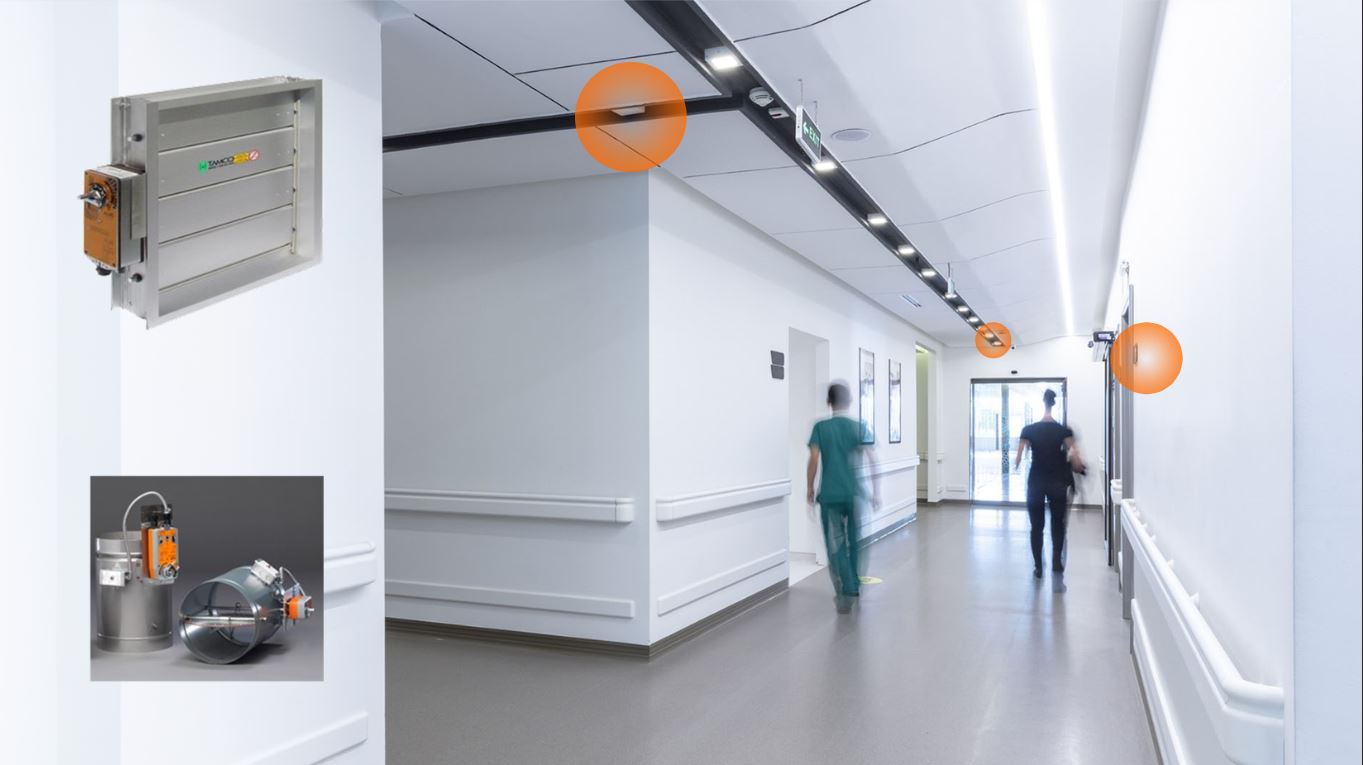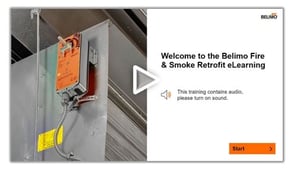Life Safety Codes and Standards that Govern Fire Dampers
Effective fire protection saves lives, minimizes property damage, and secures the continued operation of buildings. Actuated fire and smoke dampers in walls and ceilings penetrations provide the best protection along with sprinkler systems against the spread of fire and smoke. Actuator dampers also protect against low-temperature toxic smoke produced when a fire breaks out, helping for safe evacuation.
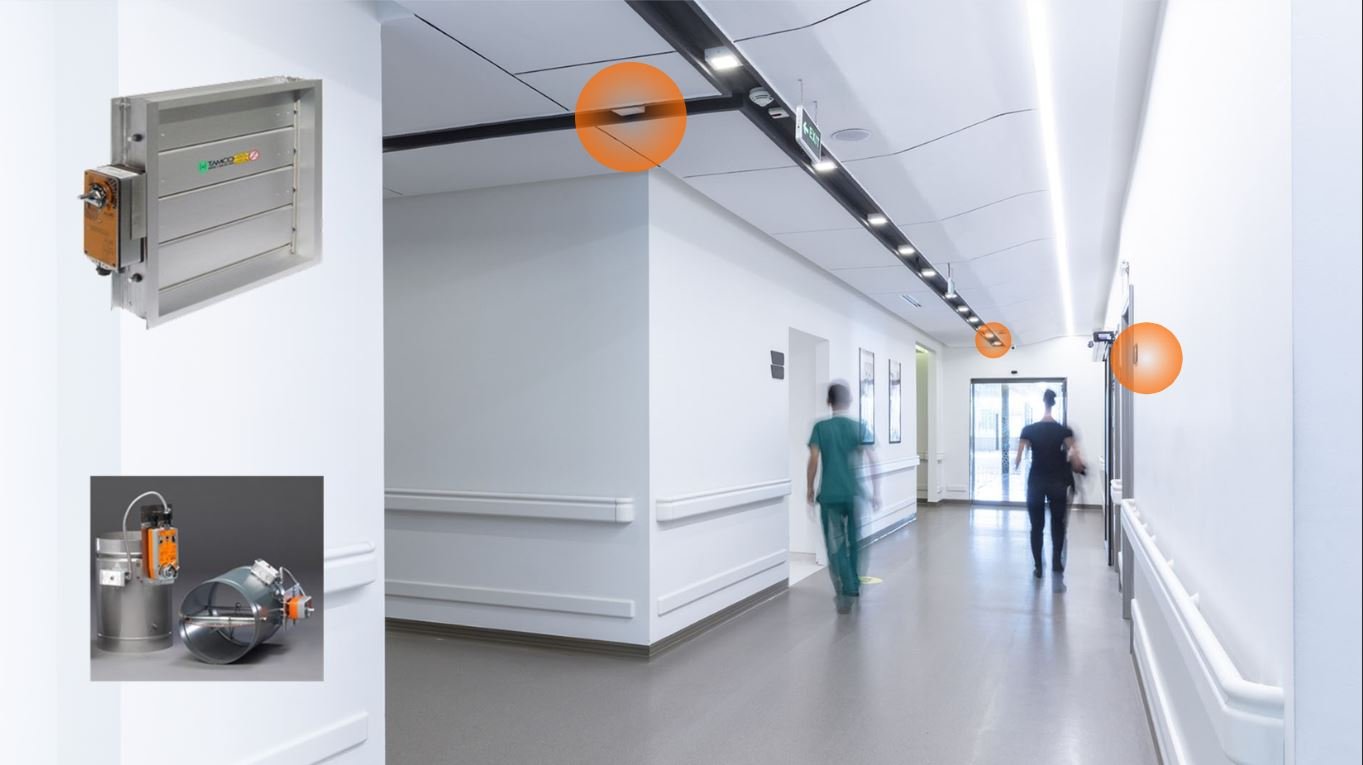
Although there are life safety codes that govern the testing, repair, and replacement of actuated dampers, deferred maintenance is a chronic problem. Many defective life safety dampers remain in the system, inoperable, without knowledge of failures or dampers fastened open. As buildings age and systems degrade, more fires will occur. The number one failure point on old dampers is the actuator.
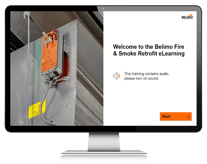
Take this free online training and learn the codes and standards that govern damper actuators, common types of dampers, replacement processes, and additional information on retrofit replacements. This training takes approximately 30 minutes to complete. There is a pre-quiz in the beginning, to prepare you for the final quiz at the end. The quiz is to illustrate to you what you have attained during the training.
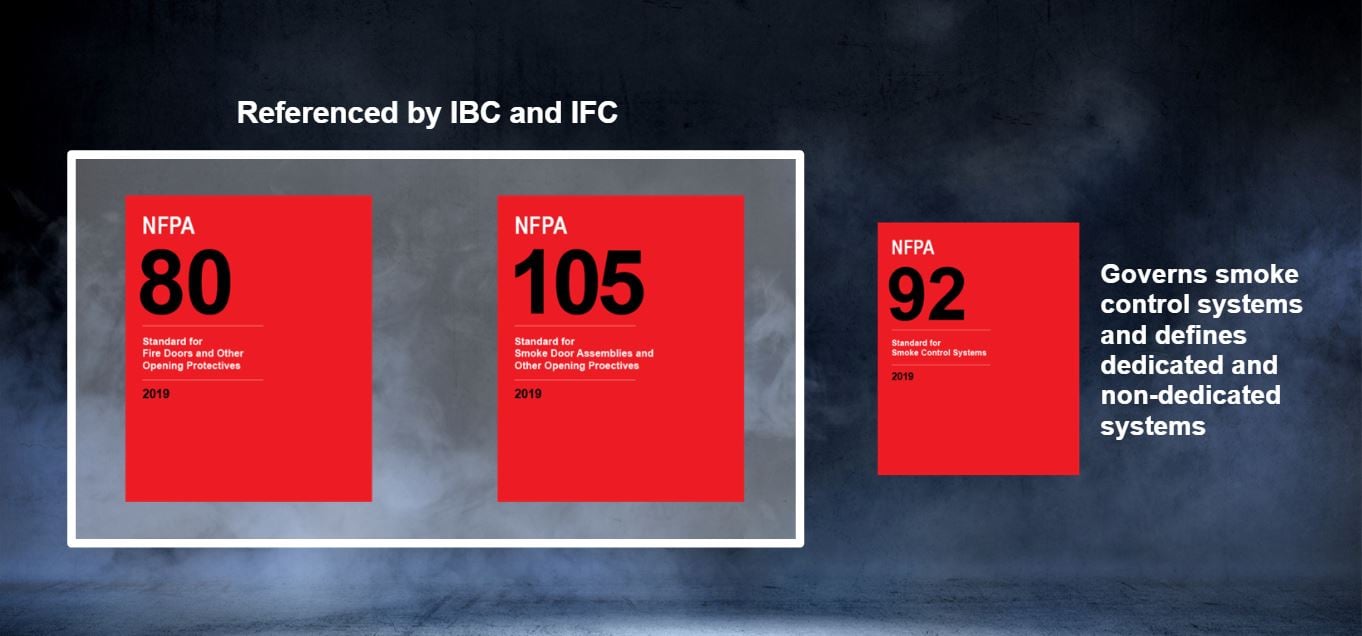
The two principal codes governing fire and smoke dampers are the International Building Code and the International Fire Code. Both codes reference standards laid out by the National Fire Protection Association (NFPA) on testing, repairing, and recording activities on life safety damper actuators. This makes the NFPA standards the law. The codes reference NFPA 80, 105, and 92. NFPA 92 governs smoke control systems and defines dedicated and non-dedicated systems. Dedicated systems are used for smoke control only, and non-dedicated systems share operations with HVAC systems. NFPA 92 contains the same periodic testing requirements as NFPA 105, but it refers to the entire smoke control system, including dampers. NFPA 80 and NFPA 105 specifically regulate damper testing.
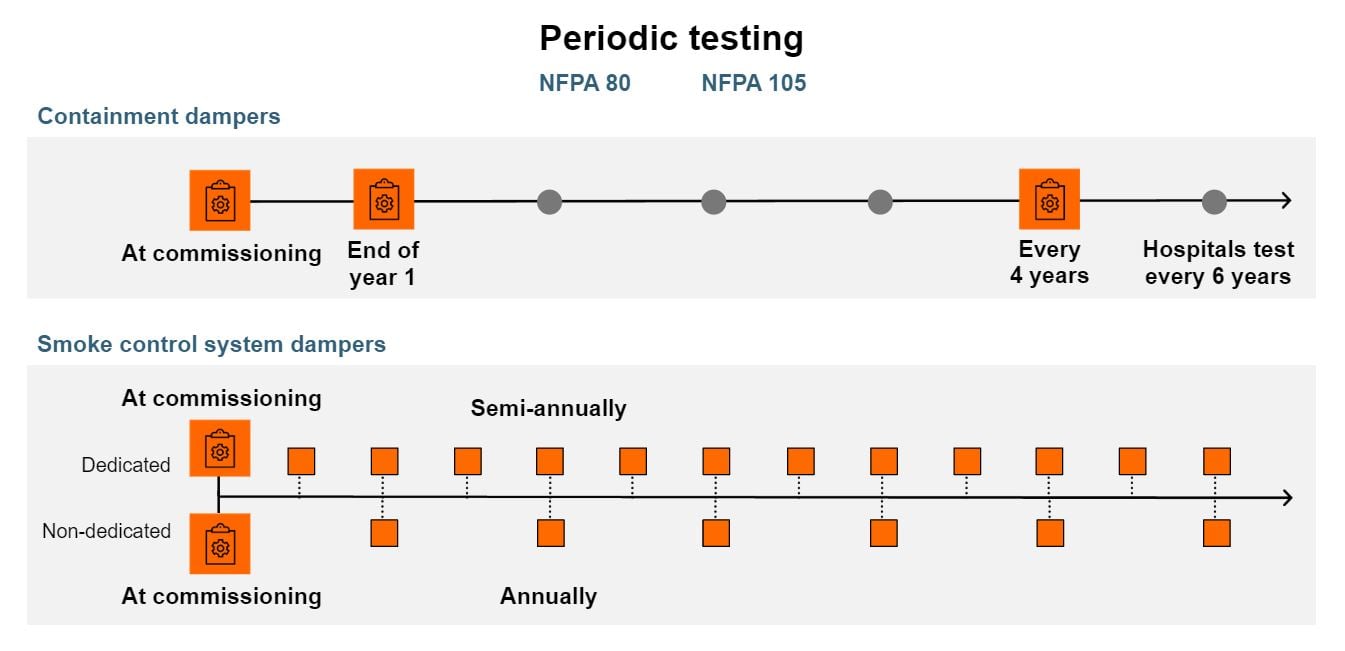
In commercial buildings, containment dampers must be tested at commissioning and at the end of the first year of occupancy and then every four years. Hospitals must test every six years. Dedicated smoke control system dampers must be tested at commissioning, then semi-annually. If the dampers are non-dedicated, meaning they are part of the HVAC system, they must be tested at commissioning and annually. Local codes may vary and override national codes and standards.
According to the NFPA 80 and 105, the building owner's responsibility is to record periodic testing and corrective actions. Download an easy-to-use testing checklist which can be saved as a log of your routine testing. The fire marshal or building official may demand the records when inspecting a building.
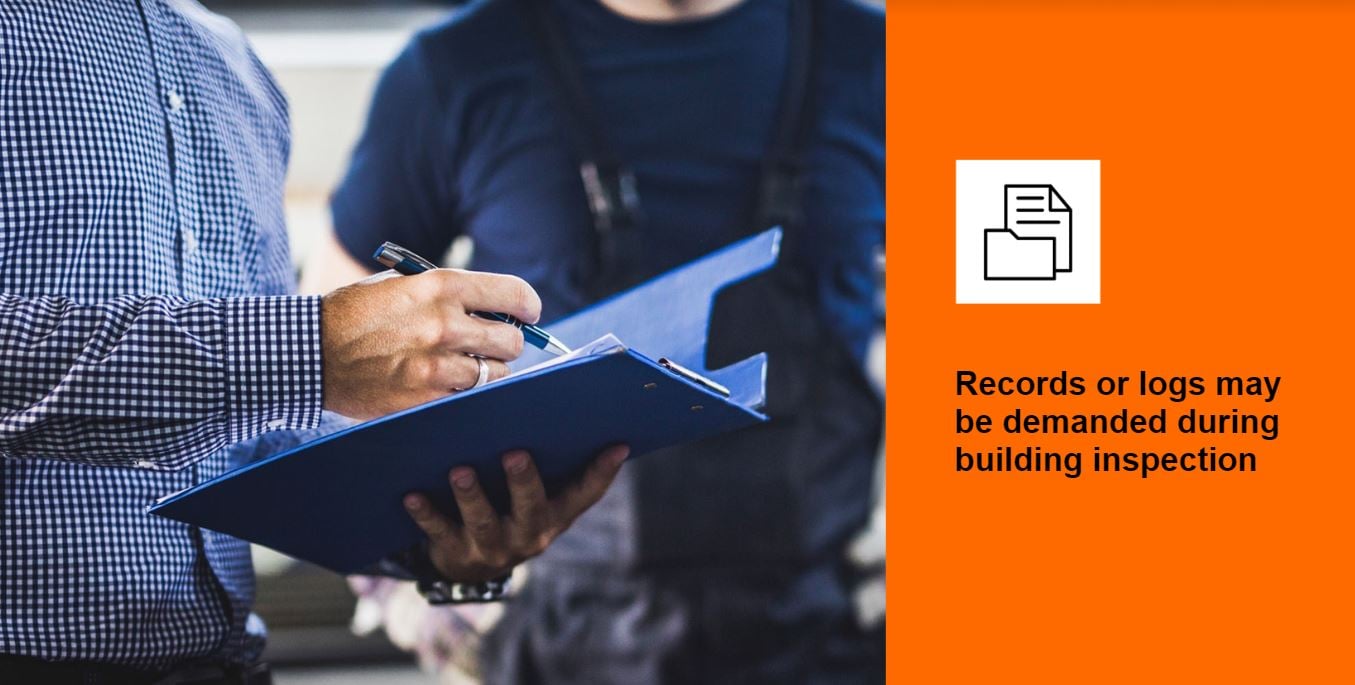
During the required periodic testing defective damper actuators are often identified. According to NFPA 80 and 105, "if the damper is not operable, repairs shall begin as soon as possible."
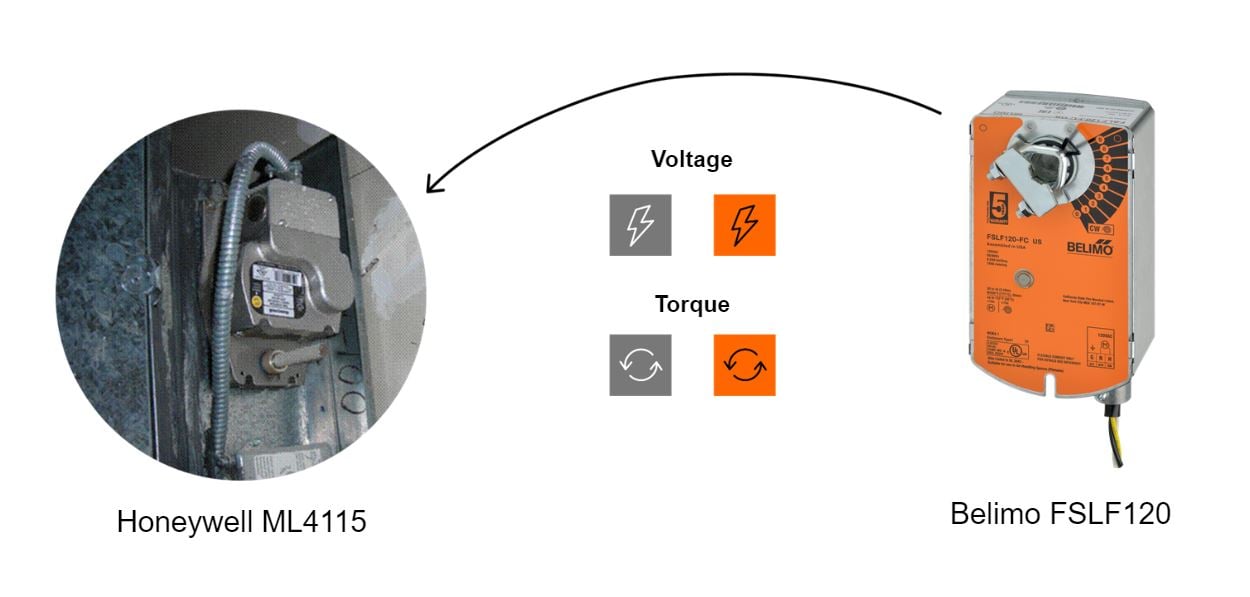
Click here to access a full line of retrofit installation instructions.

